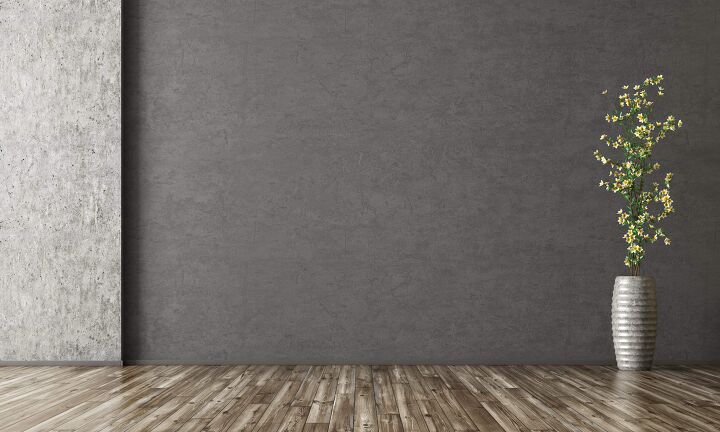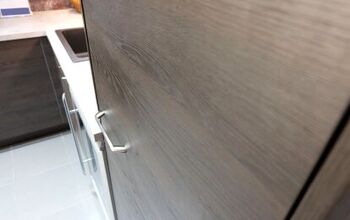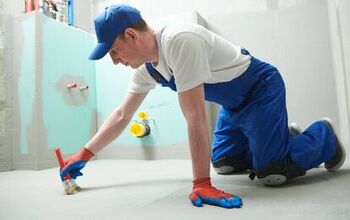Dryvit Vs. Stucco: Which Material Is Better?

This is a common misconception that we want to clear up straight away. Dryvit is actually the brand name for a specific EIFS manufacturer – not a type of siding itself. For clarity, throughout this article, Dryvit and EIFS will be used interchangeably to match the common parlance.
In relation to home construction, Stucco is building siding made of layers of cement, lime, sand, and water over a wire or wood frame with a finishing top coat. The materials are porous and strong but can crack with time and weather exposure. Dryvit is the company that brought EIFS from Europe to America. Also known as Exterior Insulation and Finish Systems, this alternative to traditional Stucco uses a rigid insulation and is designed as a waterproof system.
Between EIFS and traditional stucco, traditional stucco is the superior solution. It is basically a layer of rock surrounding your home. It’s strong and porous. EIFS can work well in certain situations but will lead to mold build-up or hidden water damage if not installed improperly.
In this article, we will discuss the differences between dryvit and stucco and weigh out each product. That way, you can decide which material is the best for your project. Let’s get to it!
Do You Need Stucco Installation or Replacement?
Get free, zero-commitment quotes from pro contractors near you.

Comparing The Cost: Dryvit VS Stucco
The cost for Dryvit or Stucco is dependent on the area you’re in and the size of your home. Usually, the EIFS will end up a little bit cheaper, but it requires specialized labor to make sure it’s installed correctly.
Installing traditional stucco siding over wood, typical in American construction, costs roughly $8.50 per square foot. Depending on your area and the installer’s quality, this can range as low as $5 per sq ft and as high as $12 per sq ft.
Traditional stucco usually lasts 50-80 years when properly installed. It’s incredibly durable and has a very low maintenance cost per year compared to other sidings.
Dryvit
Dryvit has a much lower price point and runs between $3.50 and $8 per sq ft. This can vary by area, of course, but it’s an excellent general price point to keep in mind. It’s worth noting that Dryvit is better installed over brick than wood.
Between the two, Dryvit is the cheaper option and has a 50-60 years lifespan when installed correctly. Unfortunately, it brings a stigma with it. Homes with EIFS installed often sell for 20-30% less than similar homes in the area.
If you decide EIFS is the choice for you, document everything. Make sure that your installer is EIFS Certified, and get a warranty on the siding.
Should I Choose Dryvit Or Stucco?
When faced with the choice between Dryvit and traditional stucco, the traditional method is usually the winner. There may be situations where EIFS wins out, but if you can afford the higher cost, traditional stucco is the way to go. The conventional method hasn’t changed much in centuries of use for a reason, because it works. It’s an attractive look, with colors in earthy tones and best paired with flat roofs and clay tile.
Unfortunately, traditional stucco is prone to cracking if the foundation for the house settles. Areas with heavy rain or wide-ranging temperatures are also known to cause issues with traditional stucco.
Northern or Eastern climates don’t always lend themselves well to traditional stucco either. In these situations, Dryvit can win out. It uses rigid foam insulation that provides savings on heat bills, and if installed correctly, it should never have issues with cracking.
Pros And Cons Of Traditional Stucco
Traditional stucco siding consists of a mixture that is applied wet to a wood or metal frame and hardens to a very dense solid. The most basic stucco mixture is water, lime, sand, and Portland cement.
Pros
Walls of traditional stucco are basically like wrapping your home in rock. They are durable, extremely fire resistant, and deliver a gorgeous earthy feel to any house.
The finished product is porous, allowing water to escape and preventing moisture issues. Moisture and mold are not common concerns with traditional stucco when installed correctly.
This type of siding is widely used throughout the Southwest, especially in Florida and Texas. When installed correctly, it lasts between 50 and 80 years.
Cons
While traditional stucco siding has its strengths, it suffers some disadvantages as well. Because of its rigidity, temperature changes and house shifting can cause unsightly cracking. Drilling into stucco for maintenance or modification can be challenging too.
Homes in northern or eastern climates with more comprehensive climate ranges have had mixed results with traditional stucco siding because of their wide-ranging climes. It doesn’t handle large quantities of rain particularly well either.
Experts recommend against painting traditional stucco siding. The paint can trap moisture and cause mold buildup. This means that if you don’t like those earthy tones, you’re out of luck.
Pros And Cons of Dryvit
Dryvit (EIFS) has been used in Europe for decades and has worked well there. This siding does best when installed over concrete, stone, or brick.
Modern EIFS is made up of six layers:
- Water-Resistant Barrier
- Adhesive
- Rigid Foam Insulation
- Base Coat
- Reinforced Mesh
- Finishing Coat
Pros
When installed correctly by a certified EIFS technician, EIFS siding has multiple benefits over traditional stucco. EIFS is at its strongest when it is installed over masonry – concrete, stone, or brick.
It provides a strong moisture barrier, keeping the stonework dry. It is flexible and won’t usually crack due to structural shifts or weathering either. This siding tends to perform better in cold climates than traditional stucco. You don’t have to worry about cracks, and the rigid foam insulation helps to hold the heat in.
Cons
Unfortunately, Dryvit hasn’t earned an excellent reputation since arriving in America. Throughout the 90s, lawsuits began popping up seeking compensation for water damage due to improper installations. In many of these cases, a combination of corner-cutting and installing the EIFS over wood was the root cause of the issue. Water got trapped inside, causing mold growth and wood rot. This damage was nearly impossible to detect for non-professionals.
While modern EIFS has addressed many of these issues, the negative stigma remains. Homes with EIFS often sit on the market longer and sell for less than homes with traditional stucco siding. EIFS is much easier to damage than traditional stucco siding. Something as innocent as a baseball hit in the wrong direction can leave you needing repairs.
Other Considerations
Of course, the budget is going to play highly into the product you choose. For instance, if you decide to buy a home with dryvit, this can help so that the house is more affordable; however, you want to make sure you first have a warranty on the dryvit. If you’re looking for something longer-lasting, you’ll want to go with stucco.
In addition to those considerations, if you come across any issues, you’ll want a product that’s highly available. Stucco will be one of those products that will most likely, eventually replace dryvit. So, for a long-term decision, you may want to choose stucco instead.
Related Questions
Should I buy a home with dryvit?
If you’re looking for a forever house, homes with EIFS can sell for much lower on the market. Make a thoroughly documented inspection by a certified EIFS inspector as a condition of purchase, and make sure to get a warranty on the Dryvit before you close.
How can I sell my home with Dryvit?
You may have to jump through a few extra hoops to attract buyers. Have your home inspected and certified damage-free by a certified EIFS inspector, and obtain a warranty on the Dryvit. Keep all documentation handy and know that even in the best case, it could sell for 20-30% less than other homes in the area.
How do I tell traditional Stucco from Dryvit?
Usually, it’s pretty easy; rap sharply on the siding with your knuckles. Traditional stucco is made using cement, so it will have no give against your knuckles and make a very solid sound. EIFS will have some give to it and sound hollow when knocked against.
If you’re still not sure, check under a light fixture or outlet. If you see rigid foam insulation, it’s Dryvit.
Do You Need Stucco Installation or Replacement?
Get free, zero-commitment quotes from pro contractors near you.

Wrapping Up
If choosing for your own home, traditional stucco wins out most of the time. It doesn’t bear the same negative associations as “Dryvit” and won’t drop your selling value. Still, in northern or eastern climates where traditional stucco has issues, properly installed EIFS can be a wise choice. Installing EIFS is NOT a DIY project. Always have EIFS installed by certified EIFS technicians and retain copies of everything.
Get a warranty on the life of the EIFS and read the details thoroughly. Before making any modifications to your home, always consult with trained professionals and make sure you follow local building codes. Be aware, if a professional quotes you a price that seems too good to be true, it most likely is. You get what you pay for, so don’t be discouraged if the price is high, as the job will be completed correctly.
Related Guide

We are a team of passionate homeowners, home improvement pros, and DIY enthusiasts who enjoy sharing home improvement, housekeeping, decorating, and more with other homeowners! Whether you're looking for a step-by-step guide on fixing an appliance or the cost of installing a fence, we've here to help.
More by Upgraded Home Team













![10 Best Cordless Leaf Blowers – [2022 Reviews & Ultimate Guide]](https://cdn-fastly.upgradedhome.com/media/2023/07/31/9070789/10-best-cordless-leaf-blowers-2022-reviews-ultimate-guide.jpg?size=350x220)













